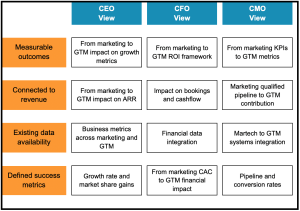
Here’s the thing about SEO (search engine optimization): Whether you’re a marketer or a business owner managing your own web presence, it matters. A lot. But trying to define what it means to “be good at SEO,” can be a challenge. Rules are constantly changing, and the algorithms used to place and rank pages in search results continue to evolve as Google and other search engines out there adapt how they determine whether or not a page is “relevant.”
As a marketer, this is what used to terrify me about SEO. Bad SEO can make or break your website, and there is a finite amount of space to get it right.
So that’s what I’m here to talk to you about today because I’ve learned over the past year that SEO doesn’t have to be that scary. Yes, the rules will continue to change, but there is one simple strategy to help take your SEO game up a couple of notches – knowing what are the bad SEO strategies out there that you should be avoiding like the plague…
Bad SEO Habit No. 1: Keyword Stuffing
What is keyword stuffing? It’s when you overload a page with an unnatural proportion of short or long-tail keywords, phone numbers, and other information, in an attempt to game the system to get a better search engine ranking. I have some bad news for the smartypants out there who think this strategy works. Google knows about this practice, to the point where they have a dedicated support page about it.
This kind of practice may have worked back in the day, but now Google actively considers content relevancy, as well as user experience, when calculating a website page ranking. That’s why back in April 2015, Google shared it was going to demote the ranking of websites who did not have a responsive website design. Why? Poor mobile user experience.
The moral of this story is that nailing a particular keyword or content percentage is not going to be what gets you the SEO results you want. In fact, it could have the opposite effect. Which leads me to my next point…
Bad SEO Habit No. 2: Feeding The Robots First
Google, Bing, Yahoo…instead of little ones and zeros, I like to imagine these brands as great big robots who stand guard at the gates of the Internet. When I want to know how long to bake a chicken in the oven, I call upon these Internet Robot Gatekeepers. And when I need to know how to put out the fire in my oven from me over-cooking said chicken, back to the Internet Robots, I go.
This is what bugs me as a user: When I go to a search engine to figure out how to put the fire out in my kitchen, and then the page with the great ranking ends up being awful. It either doesn’t have any valuable information on it, or the information is minimal like, “If your kitchen is on fire, you should probably put it out,”
Best case scenario, I’m annoyed and inconvenienced. Worst case scenario, well, my kitchen is still on fire.
This is the result of something called “feeding the robots first.” Meaning you create a page with the idea of nailing a particular keyword first, and then thinking about the content for the user second. Maybe you did need that page, but maybe you didn’t. Who knows? When you build a page on your website that exists purely to grab the attention of a robot to get a higher search ranking, instead of creating something that provides valuable information to potential customers, someone is going to end up unhappy.
Instead, focus on developing a design and sitemap with purpose that is then further supported with meaningful content geared toward serving the people you’re trying to reach. Then optimize that content for SEO value. Because you can lead someone to your website, but they won’t stay if what you lead them to stinks.
Bad SEO Habit No. 3: Not Considering Page Content An Asset
One of my favorite tools that I use for SEO on WordPress websites is the Yoast SEO plugin. (A tool I learned about when I first started working here at Quintain!)
 Image Courtesy of Yoast
Image Courtesy of Yoast
What I like about it is that it clearly lays out the elements that you need to focus on to make sure you nail your website’s SEO: URL, focus keyword, SEO title, and meta description.
But what I also like is how it includes content as one of the defining factors. If you’re a marketer or an old SEO pro, you probably know how important content is. But if you’re not, well, it’s time to shift your perspective. One of the biggest mistakes I’ve seen made in the past is when someone creates a page chock full of content – including images! – but then the keyword, URL, page title and meta description is where they focus ALL of their efforts.
They don’t realize that getting found online hinges on the synergistic relationship between an SEO keyword strategy and valuable content. You can’t SEO your way out of bad page content with a killer meta description, because content is your biggest SEO asset. This is especially true as Google continues to give more weight to the relevancy of on-site page content, in addition to any other optimizations you may make.
Final Thought
When it comes to bad SEO strategies, the worst out there is thinking there is a magic bullet that will help you win at Google. Instead, think of a good SEO strategy being one that relies on many moving parts, with your content serving as the backbone of everything you do. Is it a difficult balancing act? Absolutely. You can’t have a website that gets the SEO results you want without good content as a foundation. And you certainly won’t see the site traffic you want without doing some keyword research and optimizing your content and search result fields.
But just the simple act of permanently shelving your “gaming the system” tactics can serve as the first step toward having a great SEO strategy.
Digital & Social Articles on Business 2 Community
(100)
Report Post





